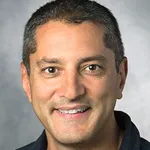
Stanford Report - February 18th, 2009 - by David Orenstein
When scientists need to detect and analyze DNA, or traces of a bioweapon or maybe an environmental contaminant, there's a good chance they'll turn to a lab technique called electrophoresis—or one of its many cousins. The versatile process is so pervasive that scientists published research employing it at a pace exceeding one paper every hour in 2007. But even though electrophoresis is used for routine experiments, such as gene sequencing or clinical analysis, it can be fiendishly difficult to create new experiment variations because the technique can be intricate and subtle.
Stanford engineers have released free, open-source software that can greatly ease experimental design and troubleshooting, smoothing the way for new medical and chemical discoveries.
To wash away the difficulty, Stanford engineers have released free, open-source software that can greatly ease experimental design and troubleshooting, smoothing the way for new medical and chemical discoveries. Spresso, available for download at http://microfluidics.stanford.edu, is like a double shot of caffeine for researchers seeking to do experiments that no one has done before.
"The software provides a new tool for designing complex electrophoresis problems and optimizing them," says mechanical engineering Associate Professor Juan Santiago, a senior author on a paper describing Spresso, published last month in the Journal of Chromatography A. Mechanical engineering and aeronautics and astronautics Professor Sanjiva Lele is a co-author. "The algorithm is about 75 times faster than current state-of-the-art tools and the open-source feature means it can be adapted to new problems," Santiago said.
That 75-fold faster performance, enabled by numerical algorithms unique to Spresso, can mean the difference between waiting overnight for a result and getting it in a few minutes, says Moran Bercovici, an aeronautics and astronautics doctoral student and first author on the paper. Spresso allows scientists to iterate through experimental variations much faster than they could by going into the lab and relying on trial and error.
Electrophoresis simply refers to putting a charged molecule, such as DNA or an explosive compound, into a medium such as a liquid and using an electric field to move it past a detector. What is not so simple, however, is the behavior that results from simultaneous interactions with electric fields, chemical reactions and the other phenomena at play. Among the advances Spresso makes over other software programs is the ability to account for dispersion effects, which can lower the concentration of a target chemical to the point where it becomes unresolvable.
Using the software, researchers can quickly and accurately predict how their experiments will run using a database of more than 400 chemical species, electric field and flow control methods, and other variables, Bercovici said. They also can use the software to troubleshoot and refine their experiments.
Bercovici and mechanical engineering graduate student Robert D. Chambers have used Spresso to design electrophoresis experiments, including a related process called "isotachophoresis," in which they were able to successfully but indirectly detect particularly stealthy toxic chemicals by sensing their effect on the surrounding medium.
"Electrophoresis is helping to enable some of the technologies that are on the forefront of science right now, such as genomics and proteomics," said Chambers, referring to the study of the coding for and expression of proteins made by the cells in our bodies. "Using Spresso, people can now better optimize chemical analyses; it is not inconceivable, for example, that these advances may help us sense a cancer marker which was otherwise at too low of a concentration to be detected."
Primary funding for the research comes from the fellowships supporting the students and from a Defense Advanced Research Projects Agency contract. Bercovici has an Office of Technology Licensing Stanford Graduate Fellowship and a Fulbright Fellowship. Chambers is currently supported by a fellowship from Eastman Kodak Co. and formerly held a fellowship from the School of Engineering.

